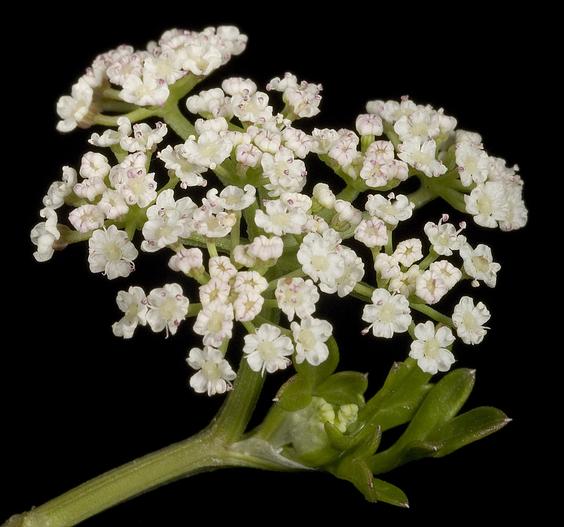Sea Celery
(Apium prostratum)
Sea Celery (Apium prostratum)
/
/

Kevin Thiele
CC BY 2.0
Image By:
Kevin Thiele
Recorded By:
Copyright:
CC BY 2.0
Copyright Notice:
Photo by: Kevin Thiele | License Type: CC BY 2.0 | License URL: https://creativecommons.org/licenses/by/2.0/ | Uploader: Kevin Thiele | Publisher: Flickr



























































Estimated Native Range
Summary
Apium prostratum, commonly known as Sea Celery, is a perennial herb native to coastal areas of Australia and New Zealand, including sandy seashores, salt marshes, and coastal grasslands. It is a low-growing plant with a prostrate or erect habit, reaching up to 50 cm in height. The leaves are pinnate with toothed leaflets and emit a celery-like aroma when crushed. Sea Celery blooms in spring and summer, producing small, inconspicuous clusters of tiny pink and white flowers that are less showy compared to other garden plants. Its native habitat supports a variety of coastal wildlife and plays a role in stabilizing sandy soils.
Sea Celery is valued for its culinary uses, as both the leaves and stems can be eaten raw or cooked, imparting a flavor similar to traditional celery. It is a historical food source for indigenous peoples and early settlers. In addition to its use in flavoring soups, it is incorporated into native Australian spice mixes. Gardeners appreciate Sea Celery for its adaptability to various soil types and its ability to thrive in full sun with medium water requirements. It is suitable for herb gardens, coastal plantings, and as an edible ground cover. While it is generally easy to maintain, it can be susceptible to leaf spot diseases and may require protection from slugs and snails. Sea Celery is not known for being invasive but should be monitored to prevent unwanted spread in non-native areas.CC BY-SA 4.0
Sea Celery is valued for its culinary uses, as both the leaves and stems can be eaten raw or cooked, imparting a flavor similar to traditional celery. It is a historical food source for indigenous peoples and early settlers. In addition to its use in flavoring soups, it is incorporated into native Australian spice mixes. Gardeners appreciate Sea Celery for its adaptability to various soil types and its ability to thrive in full sun with medium water requirements. It is suitable for herb gardens, coastal plantings, and as an edible ground cover. While it is generally easy to maintain, it can be susceptible to leaf spot diseases and may require protection from slugs and snails. Sea Celery is not known for being invasive but should be monitored to prevent unwanted spread in non-native areas.CC BY-SA 4.0
Plant Description
- Plant Type: Herb
- Height: 1.5-2 feet
- Width: 1-3 feet
- Growth Rate: Moderate
- Flower Color: White
- Flowering Season: Spring, Summer
- Leaf Retention: Evergreen
Growth Requirements
- Sun: Full Sun
- Water: Medium
- Drainage: Slow, Medium, Fast
Common Uses
Bee Garden, Bird Garden, Edible*Disclaimer: Easyscape's listed plant edibility is for informational use. Always verify the safety and proper identification of any plant before consumption., Fragrant, Low Maintenance
Natural Habitat
Native to coastal areas of Australia and New Zealand, including sandy seashores, salt marshes, and coastal grasslands
Other Names
Common Names: Prostrate Marshwort, Wild Celery, Aipo-Rasteiro
Scientific Names: , Apium prostratum,
GBIF Accepted Name: Apium prostratum Labill.